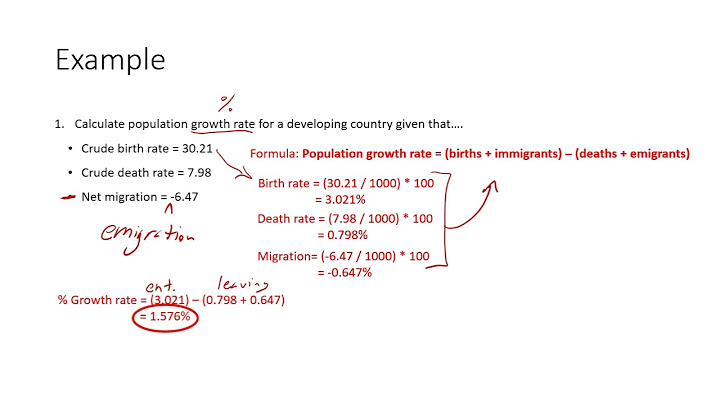Disclaimer Show
This answer is a conceptual explanation, as appears to be the request, rather than a repetition of the derivation of the Michaelis–Menten equation, which I feel inappropriate, partly because it can be found elsewhere, e.g. in Wikipedia and Berg et al.. I appreciate that, like the derivations on which it is based, some of its assumptions do not always hold, or do not hold for all enzymes, and that some with an expert knowledge of enzyme kinetics will feel that it would be better to say nothing than present a conceptual simplification. Although I welcome corrections — I am not an enzymologist — but disagree with this point of view. Summary The reason that increasing the substrate concentration of an enzymic reaction does not increase the reaction rate beyond a certain maximum (Vmax) is that the reaction rate is dependent on the concentration of enzyme-substrate complex, not its rate of formation. Increasing substrate concentration only affects the reaction rate in so far is it affects the proportion of enzyme molecules involved in enzyme–substrate complex, which reaches a maximum when all of the enzyme is in such complexes. More detailed explanation The question presents a rate constant for only one of the reactions involved in an enzyme-catalysed reaction. In fact there are four that must be considered: the forward and backward reactions for the formation of a complex, ES, between enzyme (E) and substrate (S); and the forward and backward reactions for the formation of product (P).  The Michaelis–Menten treatment considers the initial velocity of reactions, at which time little product has formed so that it is assumed that the back reaction from product can be ignored, simplifying the situation to a consideration of the rates of three reactions:  A key assumption — the steady state assumption — in Michaelis and Menten’s original derivation is that there is that there is a considerable excess of substrate over enzyme so that the substrate is in instantaneous equilibrium with the ES complex. So, in effect, at a particular concentration of substrate the concentration of ES is constant. The implication in the question that the rate of formation of this complex would determine the reaction rate is incorrect. The rate of the reaction depends only on the ES concentration and k2, the rate constant for the formation of products, also known as kcat, which is a characteristic of any enzyme and can be thought of as representing its catalytic capability:
What the substrate concentration does affect is the position of equilibrium for the formation of ES from E and S, i.e. how much enzyme is converted into complex. However there is obviously a maximum, approached asymptotically, equivalent to the total enzyme present. This explains† the hyperbolic nature of the curve for reaction rate. The concentration of substrate needed to reach this saturation (more easily measurable as that to achieve half maximum initial velocity) is another characteristic of the enzyme (and substrate) and can be thought of as reflecting the affinity of the enzyme for substrate (the dissociation constant). The hyperbolic nature of the rate curve is similar to that for binding of small molecules to non-catalytic proteins such as the oxygen-carrier, myoglobin, and hormone receptor proteins. Just as not all proteins in this latter class (e.g. haemoglobin) show simple hyperbolic binding of their ligand, so not all enzymes (e.g. allosteric enzymes) show hyperbolic kinetics. But that’s another story, which has been told many times on this site. † I have given a more extensive explanation of the hyperbolic nature of the curve in an answer to a previous question, which I must admit I had forgotten about. Describe the relationship between substrate concentration and the initial reaction rate of anenzyme-catalyzed reaction. Is this a linear relationship? What happens to the initial reactionrate as substrate concentration increases? What is the maximum initial reaction rate for the lactase enzyme at pH 7?  Explain why the maximum initial reaction rate cannot be reached at low lactoseconcentrations. What does your data indicate about the optimum pH level for this lactase-catalyzed reaction? Enzymes function most efficiently at the temperature of a typical cell, which is 37 degrees Newly uploaded documentsWhat is the relationship between reaction rate and substrate concentration?The relationship between rate of reaction and concentration of substrate depends on the affinity of the enzyme for its substrate. This is usually expressed as the Km (Michaelis constant) of the enzyme, an inverse measure of affinity.
What is the initial effect of increasing the concentration of substrates?Initially, an increase in substrate concentration leads to an increase in the rate of an enzyme-catalyzed reaction. As the enzyme molecules become saturated with substrate, this increase in reaction rate levels off.
What is the relationship between enzyme concentration and the initial rate of reaction?The initial rate of reaction is directly proportional to the enzyme concentration because the more enzymes that are present, the greater the number of active sites that are available to form enzyme-substrate complexes.
What happens to the reaction rate when the substrate becomes more concentrated?When we perform a series of enzyme assays using the same enzyme concentration, but with a range of different substrate concentrations, a slightly more complex relationship emerges, as shown in Figure 6. Initially, when the substrate concentration is increased, the rate of reaction increases considerably.
|

zusammenhängende Posts
Werbung
NEUESTEN NACHRICHTEN
Werbung
Populer
Werbung

Urheberrechte © © 2024 ketiadaan Inc.


















